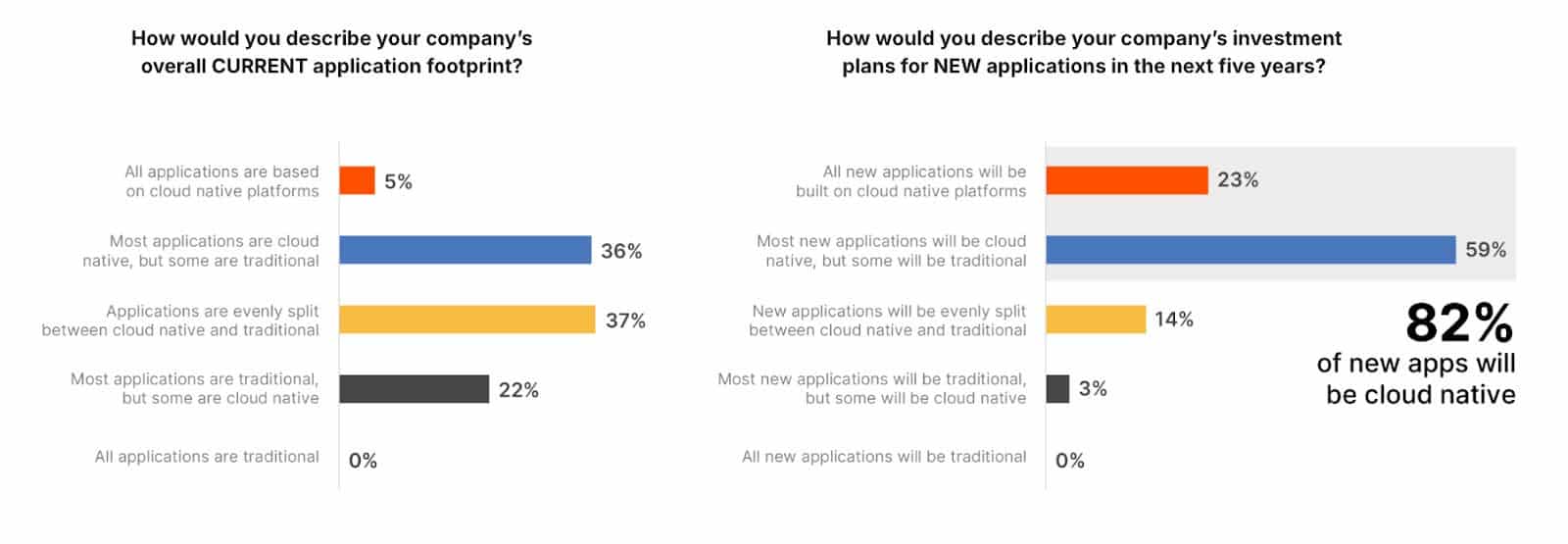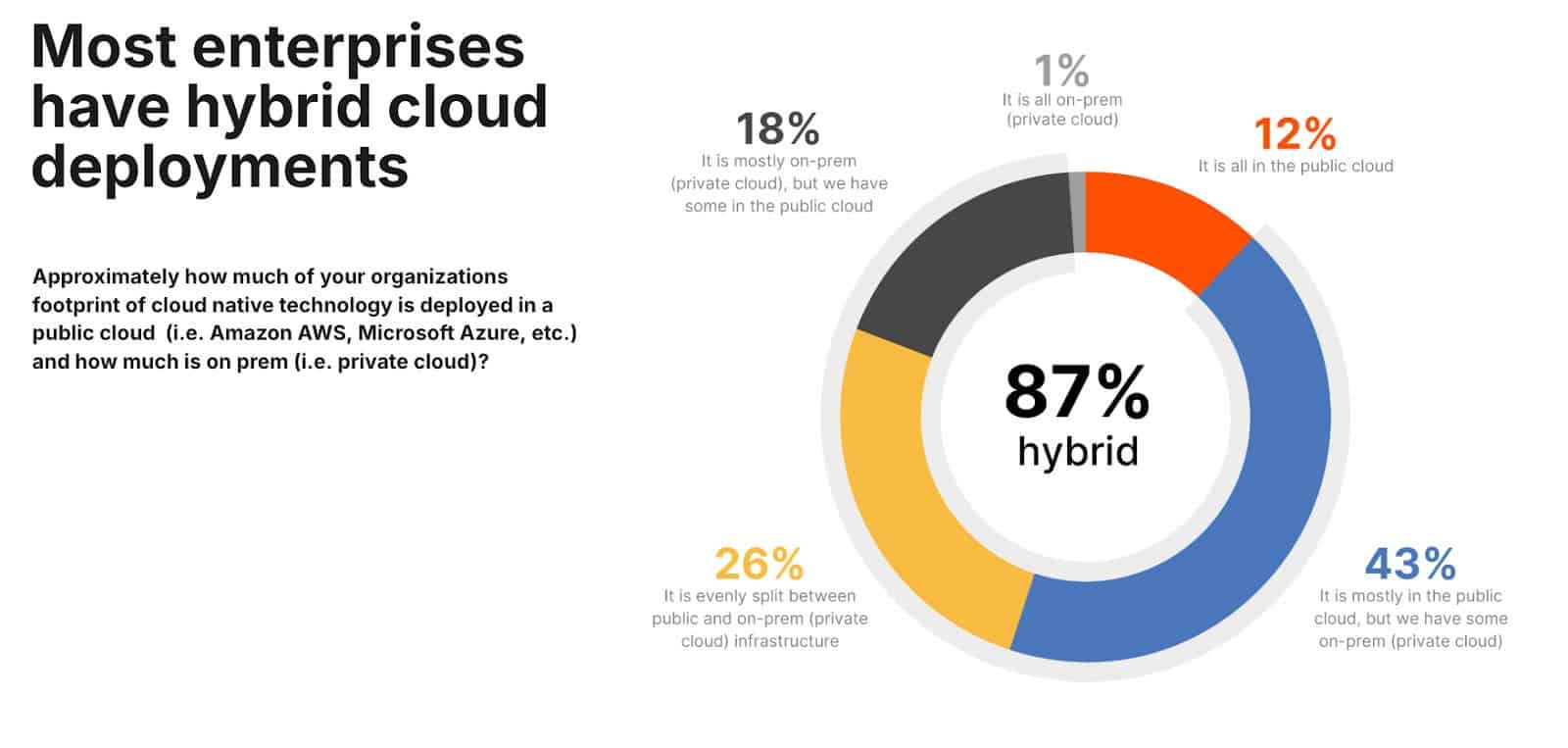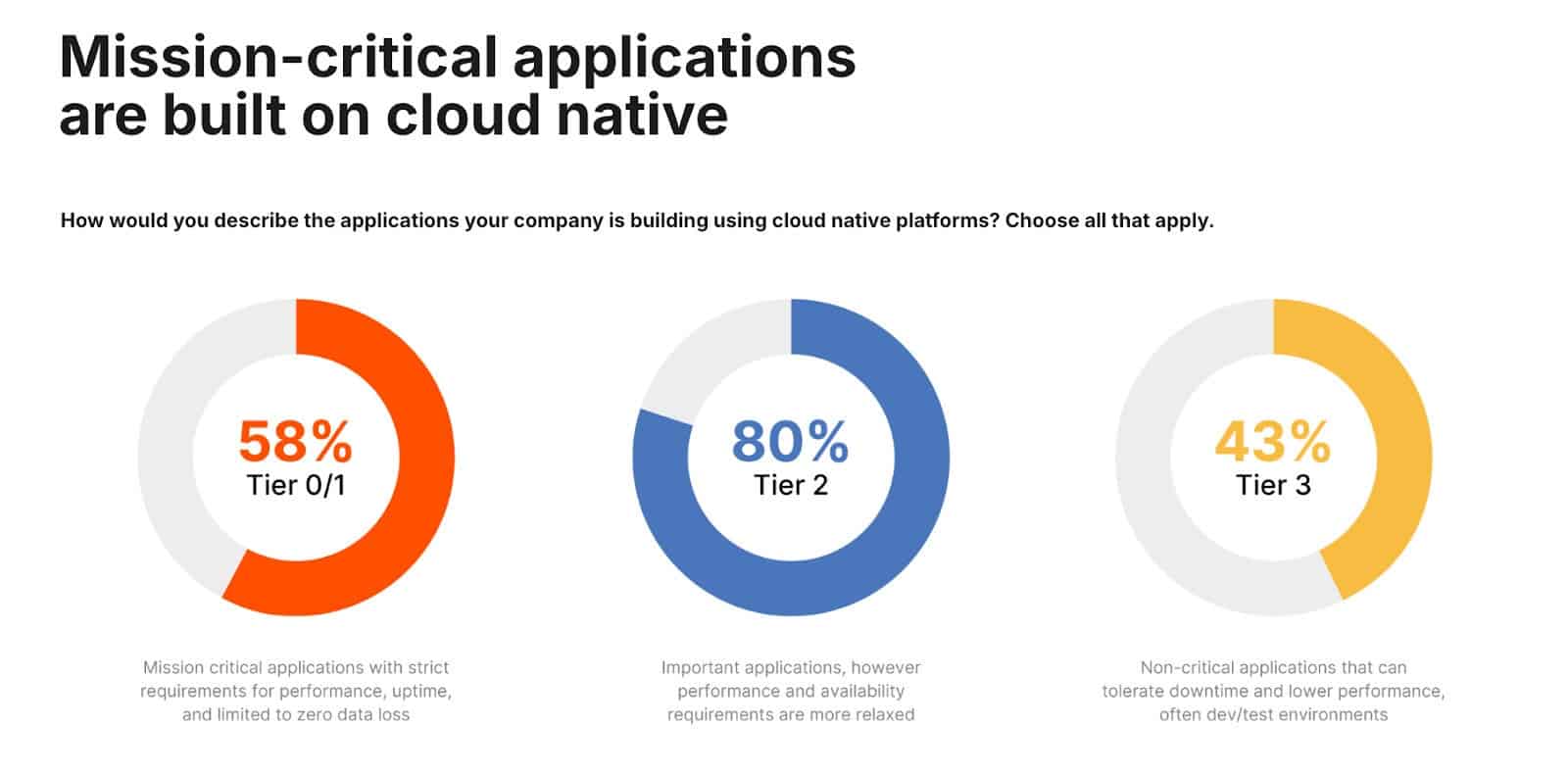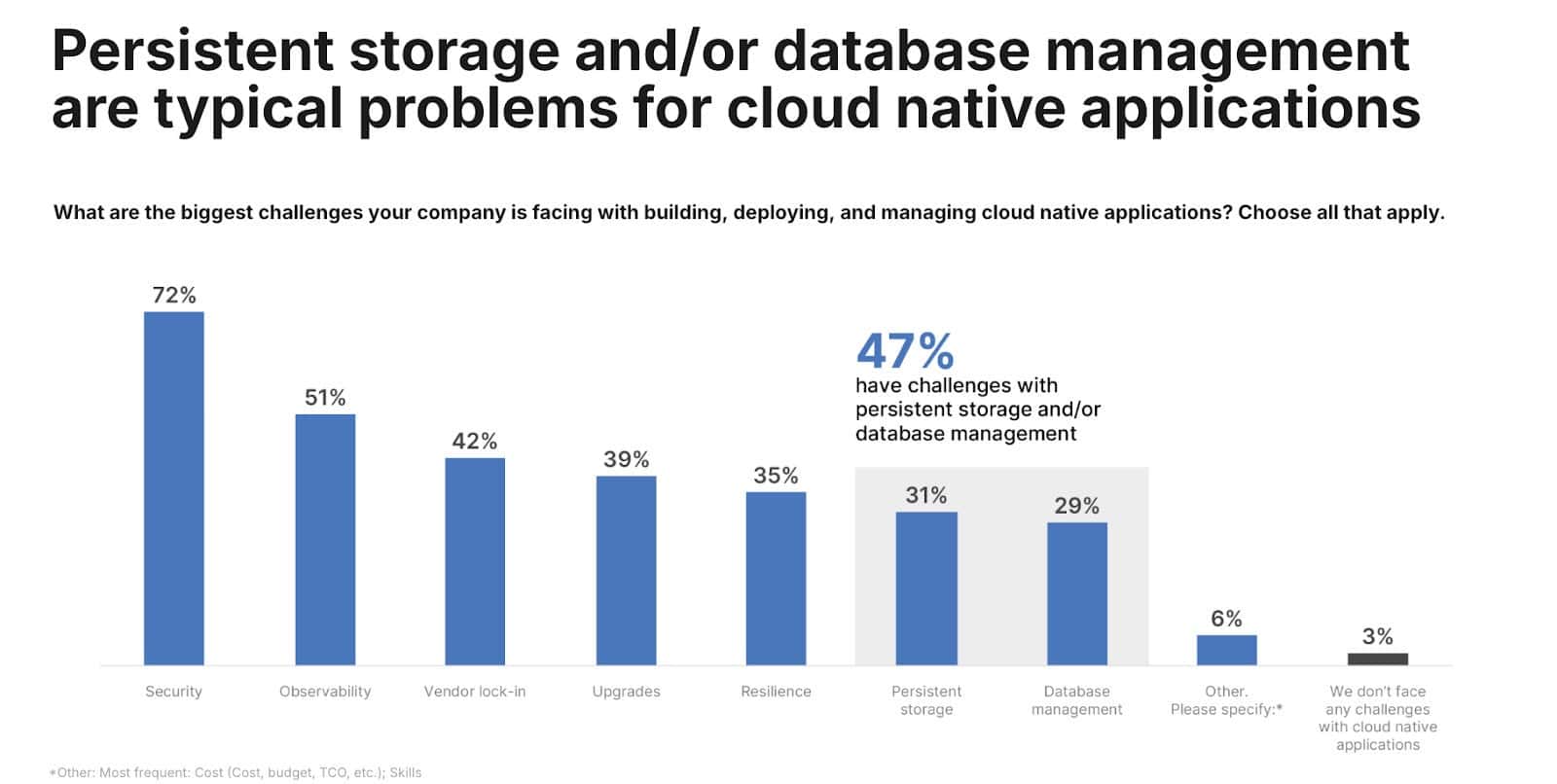Applications running in containers have come a long way. The conversation has shifted from if organizations are adopting cloud native technologies like Kubernetes to what kinds of applications they’re running in these environments. Today, many of these workloads are mission critical, and platform teams must deliver enterprise-grade capabilities to support them.
For the Voice of Kubernetes Experts 2025 Report: The Future of VM Workloads, Portworx by Pure Storage partnered with Dimensional Research to survey over 500 qualified participants who were directly responsible for current or past use of VMware and worked at an enterprise company with more than 500 employees that had made a significant investment in Kubernetes.
While the full report covers a wide range of insights—including the future of VMware estates—this article focuses on how enterprises are leveraging cloud native environments for modern application development and mission-critical workloads.
In the context of this survey, cloud native refers to the use of technologies like containers, Kubernetes, immutable infrastructure, microservices, and service meshes to build and run scalable applications.
The industry is building new applications on cloud native

Cloud native infrastructure has undergone a transformational journey. Once used for ephemeral workloads and DevTest environments, technologies like Kubernetes are now becoming the gold standard for application development. In fact, 41% of respondents say their current application footprint is already mostly cloud native.
Enterprises are prioritizing their cloud native platforms, with 82% planning to use their cloud native environments as the primary platform for their new applications in the next five years. Many are choosing to run their infrastructure as container-first, signaling a shift in investment for IT teams.

Cloud native platforms are being built with hybrid cloud in mind. A staggering 87% of respondents deploy their cloud native environments in hybrid cloud setups.
Why hybrid? The benefits are clear: flexibility, cost control, and reduced vendor lock-in. Enterprises often run sensitive or regulated workloads on-premises, while taking advantage of public cloud scalability for dynamic workloads. By matching each application with the most appropriate environment, organizations can optimize performance, cost, and compliance.
Cost is another driver. Placing workloads in the most economical environment—combined with features like thin provisioning—can significantly reduce infrastructure spend. A hybrid cloud approach also protects organizations from being locked into a single vendor. Overreliance on a single vendor can have devastating cost implications. In recent years, enterprises have been caught off guard by hefty contract renewals that have dramatically increased IT spend.
Further, changing economic conditions makes it critical for platforms to remain agile and future-proof. Uncertainty around tariffs and other macroeconomic factors means enterprises need to be ready to adapt at a moment’s notice.
Mission critical applications are built in cloud native

It should come as no surprise, then, that this increased investment in cloud native platforms means that most enterprises are running important applications in containers. In fact, 58% are running mission critical applications in containers, meaning applications that have strict requirements for performance and uptime. These applications tend to require little to no data loss in the event of a disaster, meaning platform teams need to be able to support strict availability requirements.
Mission critical applications need to be supported with high performance, high availability, and disaster recovery. This can be a challenge in the cloud native world, as platform teams need to be able to support these critical applications with the functionality they need in order to meet the strict compliance measures.
It’s not just traditional applications moving to containers—data-intensive use cases like databases (69%) and AI/ML workloads (60%) are also increasingly cloud native. In total, 98% of enterprises say they run data-heavy workloads in their cloud native environments.
Cloud native environments run into challenges with persistent storage

Of course, scaling mission-critical workloads in cloud native environments isn’t without its hurdles. Survey respondents cite top challenges such as security (72%), observability (51%), resilience (35%), and persistent storage (31%).
As cloud native adoption scales into the primary development platform, enterprises need to support their platforms with the functionality required for the kind of data-intensive and mission critical applications they are running. Their platforms need to be able to support the preferred hybrid cloud environments with a consistent and centralized platform that allows developers to capture the full benefits of cloud native development.
Platforms also need to be able to address the key issues platform teams are facing with their cloud native applications. Tight integrations with monitoring solutions can help address issues like observability, while solutions that can provide features like high availability and disaster recovery can help with resiliency. Finally, solutions need to be able to provide tools that help platform teams manage their persistent storage. They need to be able to streamline storage operations and make Day 2 management simple.
Portworx by Pure Storage addresses many of the key challenges organizations face while managing their cloud native applications. Portworx is the container data management platform that automates Day 2 storage operations, secures container workloads with disaster recovery, and unifies modern applications in hybrid and multi cloud environments so platform teams can deploy their applications anywhere and still provide a consistent development experience.
Want to learn more? Visit our website and download your copy of the Voice of Kubernetes Experts Report 2025 today!